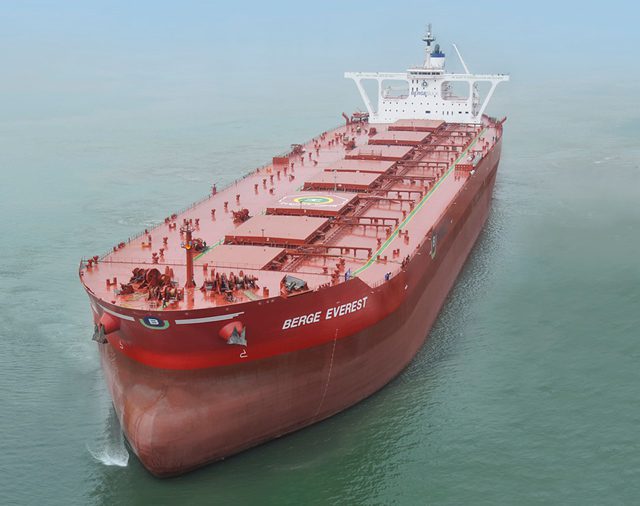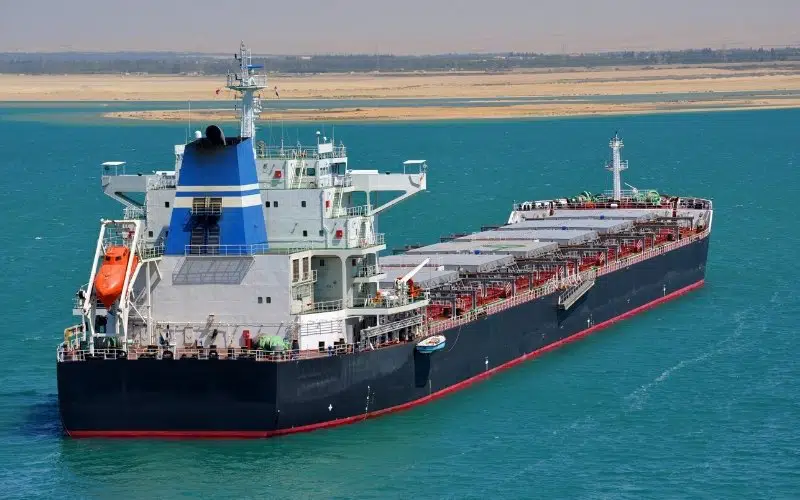Many risks were present while operating seagoing bulk vessels. It is crucial to plan carefully and be vigilant in all matters pertaining to shipboards. This site provides quick guidance to the international shipping community as well as information on loading and discharge of various bulk cargo types. It is to stay within the limitations set out by the classification organisation. It is important not to stress the ship's structural integrity and adhere to all safety rules for safe passage at sea. The detail pages of bulk carriers include information that may be helpful for both the personnel working at the terminal and those who work aboard.
General characteristics of a seagoing bulk carrier
Bulk carriers are single-deck vessels that are fitted with top-side tanks as well as side tanks. They are made to handle bulk cargo that is a single commodity. Bulk cargo that is solid refers to any other material than gas or liquid, which is smaller pieces of material that are generally well-composed, and loaded directly into ships' cargo space. These dry cargoes can include bulk grain, sugar and ore. Bulk carriers are vessel that is primarily used to carry liquid or bulky cargo. This would also include tankers. However, in normal usage the term is typically used to describe vessels built to transport solid bulk cargos, typically grain and similar agricultural products as well as mineral products such as coal, ore, stone and more., on some or all of the voyage legs. Peruse this time charter specialist for more.

What Is A Bulk-Carrier What Are The Major Characteristics Of Bulk Carriers:
"A ship which is intended primarily to carry dry cargo in bulk, including such types as ore carriers and combination carriers"
-Carrying capacities vary between 3,000 and 300,000.
The average speed is 12 to 15 knots
-Single deck ships, ie no tweendecks
Carriers of medium to small size bulk (carrying capacity between 40,000 and 60,000 tonnes) typically come with equipment for handling cargo. However larger vessels can make use of shore-based -facilities to load or unload.
-Cargo holds that are large do not have obstructions, and are bigger hatch sizes for ease of loading and unloading.
The bulk carriers typically have one ballast hold. This is used for ballast voyages to improve stability. To partially ballast the voyage, two or three additional holds might be allowed, however they only at port.
-They are available in single pull or stacking (piggyback) types of hatch covers made of steel.
There are four types of ballast tanks or ballast types.
Sloping topside wing tanks
Sloping bottom side wing tank
Double bottom tanks
The ballast tank is a peak and then a later peak tank.
Are they bulk cargo that is solid? Anything other than gas or liquid substance that is a mixture of particles and granules. It can be loaded directly into the cargo areas without any intermediate storage. It is essential to ensure that all cargoes are ready to be loaded, regardless of whether they are "clean" or "dirty" and there isn't any contamination. To load cargo, it is necessary to thoroughly clean the area. A surveyor might be required to mark the space as ready to load. To avoid contamination, it's essential to remove any residues from prior cargo. The majority of damage to bulk cargo is due to water. To avoid water intrusion, hatch covers must be watertight. All fittings (ladders or pipe guards as well bilge covers) in the hold should be checked. It is recommended to inspect each fitting in the hold (ladders,pipe guards, bilge covers...) to ensure that they are in good operating condition. They may cause serious damage to conveyor belts, which could lead to delays. If the equipment gets discharged with cargo, the ship may be held accountable. Have a look at this dry bulk vessels url for more.

Bulk Carrier or Bulker? A vessel that is designed to transport dry cargo that is loaded into the vessel with no containment beyond the ship's borders and is distinct from the bulk carrier for liquids or tanker. Bulk carriers that are conventional have only a single deck that has a single skin, double-bottom hopper side and topside tanks. Bulk carriers are designed to carry a maximum deadweight of any bulk cargo including heavy ore and lighter grain . The process of loading, transporting and then the discharge of bulk cargo that is dry isn't as easy or straightforward as many people would imagine.
Gearless Bulk Carrier
A lot of bulk cargoes have hazardous properties and may change their properties after passage. The ship could be damaged by incorrect loading e.g. The ship can bend if it is loaded to its highest forward hold. This is known as "stress?" If the weather is bad the stress can result in dangerous problems on the sea. Also, residues from prior cargoes may be a significant threat to the future cargoes. Damage from water can have a devastating effect on some bulk items e.g. cement power. It is hard to determine the cargoes that are loaded or discharged. All these factors have serious implications for the safety of bulk cargoes. Discharging bulk cargo using? Bulk cargoes are able to create a cone when loaded on conveyor belts. The angle of the cone, also referred to as the "angle for repose" is different for each cargo. Iron ore cargoes, on the other hand, form a steeply-angled cone. Cargoes that flow free will form shallower cones. A cargo that has low angles or repose may shift during the course of. Bulldozers may need to be utilized for certain items to spread the load onto the sides of the container as the cargo is close to its completion. Dry bulk carriers rely on the shoreline facilities for loading and discharging cargo. Bulk carriers are also able to self-unload with cranes or conveyors on deck.
